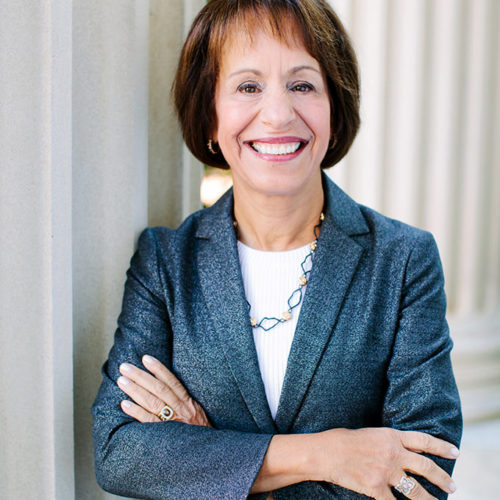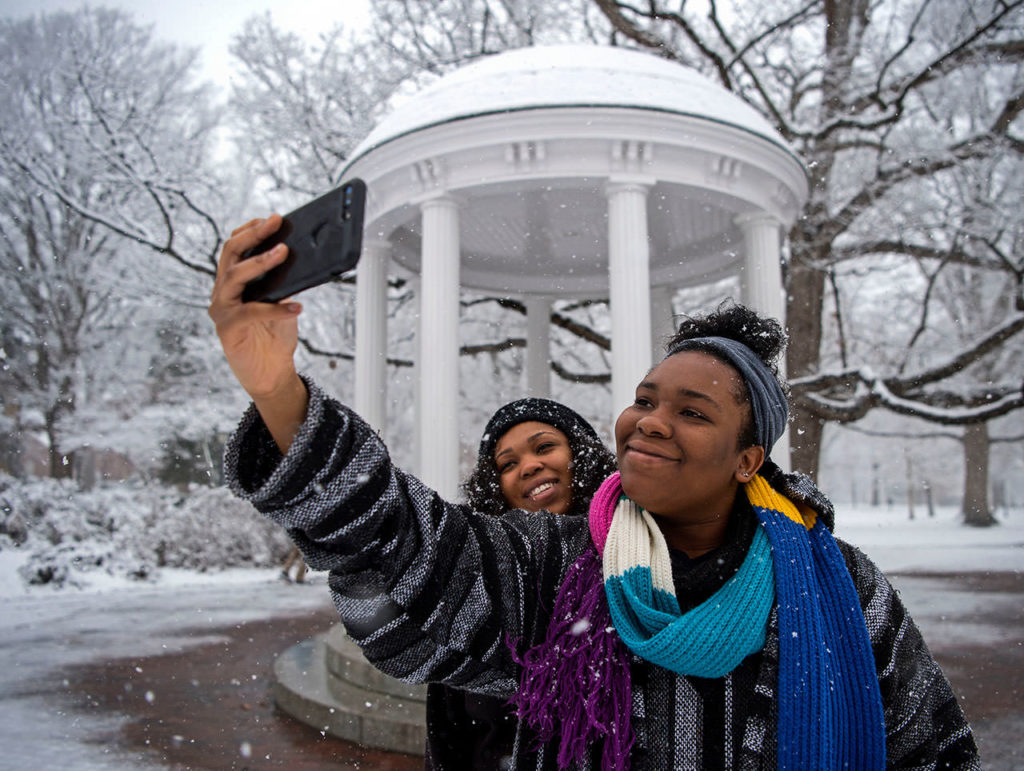Presidential Perspectives: Carol Folt, University of Southern California (and formerly University of North Carolina-Chapel Hill)
August 1, 2018
Reading Time: 5 minutes

The University of North Carolina at Chapel Hill has set a goal to double—from 100 to 200 students—the size of its Carolina Student Transfer Excellence Program, a deep partnership with some of NC’s community colleges that provides intensive advising and support for talented two-year students and was featured as an exemplar practice in the recent ATI research report. We sat down with Chancellor Folt to discuss her involvement with ATI, work at UNC, and perspective on how higher education institutions can better serve lower-income students.
Q: Why did you personally want to be more involved in the American Talent Initiative?
One of the main reasons I came to Chapel Hill was because of Carolina’s legacy and deep commitment to affordability and accessibility. As chancellor, I wanted to build upon that legacy to expand access to talented students across our state. ATI provides a chance to share best practices and our institution’s aspirations with colleagues at a range of institutions, from private to public, from big flagship schools to smaller institutions.
Q: What has UNC been doing to ease the transition for first-generation students and help them graduate?
Approximately 20 percent of our students are first-generation college students, and we want the opportunity of a university education to be a reality for these students, particularly for those who are on the margins and might never dream of the possibility of going to college. We know that, so often, financial barriers stand in the way of realizing the dream of higher education.
Before my arrival, Carolina was already meeting full need and was a need-blind institution. For a public university, that’s an extraordinary commitment, especially since we had been hit hard by large cuts in our public funding during the recession. When I arrived, the first thing I did was reaffirm our commitment to affordability. We had to say that if this is a priority, then any expendable funding must go to aid.
Even though it keeps getting harder, we will continue to hold firm to this commitment. We focus on students from all backgrounds, with a particular emphasis on students who come from two standard deviations below the poverty level. About 14 percent of our students are in a program called the Carolina Covenant, which allows them to graduate debt-free. We are also reaching out to nontraditional first-generation students; for example, we are working on programs to assist military veterans.
Q: While per-student funding in North Carolina remains below pre-recession levels, UNC steadily increased and then maintained the proportion of low-income students enrolled. How have you maintained your commitment to opportunity for lower-income students in the face of financial uncertainty?
I really believe it’s a matter of choice. Every institution has different financial backgrounds and different commitments, but we did several things to continue to be successful. One is our commitment to affordability. If you’re already meeting full need and are need-blind, there’s a shared commitment at the university to continue to focus on lower-income students.
Coming from this background, we upped our philanthropic and foundation efforts. We are raising $1 billion in our capital campaign for student aid, which is quite a bold statement of what a great university can do. Whenever I have access to discretionary funding, my first priority is student aid, and the second is faculty and staff salaries. Narrowing my own focus enables us to use our funding strategically.
We have momentum, and we’re not going to waver from something we believe in.

(Jon Gardiner/UNC-Chapel Hill)
Q: What is your perspective on community college transfer as part of ATI’s 50,000-by-2025 goal?
UNC’s Carolina Student Transfer Excellence Program is particularly meaningful to me because it reflects my own personal history as a community college student who transferred into the University of California system. As chancellor at Carolina, I have witnessed how C-STEP, working hand in hand with community colleges, provides entry to the opportunities of higher education and unlocks the full potential of these students.
Beginning at a community college is a path to UNC-Chapel Hill for many of our students. The first couple of years are hard for some students. Through C-STEP, we are reaching these students early on at their community colleges, focusing on the impediments they face, and offering them a direct path to Chapel Hill. We want students to be excited about coming to Chapel Hill and make them feel like they’re part of our community before they arrive on campus.
We are working on doubling this program because it’s been so successful. It’s wonderful to watch transfer students quickly embed in the life of the university. We’re pairing good advising programs early on with transfer and military-affiliated students. It’s making a difference in their success rates. C-STEP students’ graduation rates are almost the same as those of students who have been at Chapel Hill for all four years. These students have led student government and student organizations on campus, and have been successful in all areas of Carolina.
Q: As leader of UNC, what would you want your fellow presidents and chancellors to know about increasing opportunity through community college transfer?
I’d want them to know that the potential pool at community colleges is incredible and that these students usually have grit and determination like no others. Community colleges are a great place from which to draw more students with a diverse set of backgrounds who will enrich an entire student body.
These students are worth every ounce of assistance you can provide. My advice is to seek out those students, see them for the asset that they are, and provide that early support.
Q: One important goal of ATI is to connect institutional leaders and create the opportunity to share practices. What practice that UNC employs do you think other institutions could successfully implement?
Targeted aid is a big part of why we have been successful. For example, you can provide students aid throughout their time at school, but sometimes you can add a little bit more in the summer so they can finish their degree. A little bit of aid can go a very long way to get students to graduation.
Working closely with high schools is another practice that is working for us. We already have the Carolina College Advising Corps—we are in 77 of the lowest-income schools in the state, and we want to be in even more. In those schools, we’re providing college advising for students who may not see college as an option. The success rate of those students, once you get a full-time counselor talking with them, is nothing short of spectacular. Another example is Project Uplift, our 50-year-old program that brings high school students to campus and shows them the possibilities at Carolina.

(Jon Gardiner/UNC-Chapel Hill)
Q: Looking ahead five to 10 years, what do you see as ATI’s impact on higher education?
ATI helps change the narrative that universities aren’t reaching out. We can say, and demonstrate, that our goal is to do more to make opportunities available to people who would not have necessarily found their way to college in the past.
It also helps to create a friendly competition, and all the schools in ATI want to share best practices. This is the kind of work that none of us want to keep quiet about; we want everyone to know what we’re doing – and hear about what everyone else is doing – so we all can do it better. ATI provides that place, that incentive, and it helps set goals that all the schools can use.
Even if, or when, we achieve the numerical goals that ATI has set, we will need to go even further. ATI can help be a reminder that says there is no “good enough”; we are going to continue to do this until we erase all barriers to higher education.



